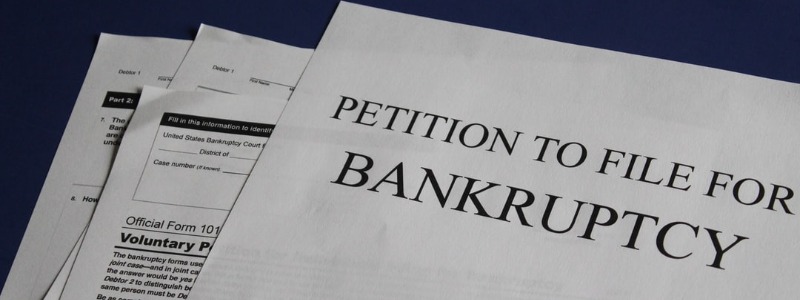When most people talk about filing bankruptcy, they usually are referring to either Chapter 7 or Chapter 13. On the other hand, when you turn on the news and hear that yet another large company has filed for bankruptcy protection, generally it is a Chapter 11 proceeding.
There are six types of bankruptcy pursuant to Title 11 of the U.S. Bankruptcy Code:
[toc]Looking at the list above, you may have noticed that they are not in numerical order. Instead, they are listed in order of relevancy. The first three types of bankruptcy make up the majority of cases filed in the United States. The final three are rarely filed.
Following is a short description for each of the six types of bankruptcy:
Chapter 7 Bankruptcy – Liquidation
Individuals, as well as businesses, can file Chapter 7 bankruptcy. However, the laws implemented back in 2005 require a means test that looks at a debtor’s income to determine if the debtor is eligible.
In this type of bankruptcy, a court-appointed trustee or administrator takes possession of any nonexempt assets, liquidates these assets (for example, by selling at an auction), and then uses the proceeds to pay creditors.
Many times in a Chapter 7 bankruptcy proceeding, all assets are either exempt and/or secured. These cases are closed as “no asset”, meaning no property was liquidated and no funds are available for distribution.
The discharge in a Chapter 7 case is usually received a few months after the bankruptcy petition is filed.
Chapter 13 Bankruptcy – Adjustment of Debts of an Individual with Regular Income
Individuals who have a regular source of income and/or do not qualify to file Chapter 7 can file Chapter 13 bankruptcy.
In a Chapter 13 bankruptcy proceeding, the debtor proposes a plan to repay debts, usually over a three to five-year time period. This repayment plan must be approved by the Court at a confirmation hearing.
The debtor usually remains in possession of any assets and makes plan payments to the trustee, who then disburses the funds to creditors. While the plan is in effect, the debtor is protected from lawsuits, garnishments, and other creditor actions.
The bankruptcy discharge in a Chapter 13 case is not received until all plan payments have been made.
Chapter 11 Bankruptcy – Reorganization
Chapter 11 bankruptcy is primarily used by businesses that want to continue operating while repaying creditors through a court-approved plan of reorganization.
Pursuant to the confirmed plan of reorganization, the debtor repays a portion of its debts and discharges others. The confirmed plan also allows the debtor to rescale its operations by terminating contracts and leases, as well as recovering assets, in order to become more profitable.
Chapter 12 Bankruptcy – Adjustment of Debts of a Family Farmer or Fisherman with Regular Annual Income
Chapter 12 bankruptcy provides debt relief to family farmers and fishermen with regular income. It is very similar to Chapter 13 bankruptcy.
During a Chapter 12 bankruptcy, a family farmer or fisherman continues business operations while debts are repaid pursuant to a court-approved plan. Plan payments are made over a three to five-year period to a Chapter 12 trustee, who disburses the payments to creditors.
Chapter 9 Bankruptcy – Adjustment of Debts of a Municipality
Chapter 9 bankruptcy is very similar to Chapter 11 bankruptcy. However, the debtor must be a municipality – cities, towns, villages, counties and school districts fall under this category.
Chapter 15 Bankruptcy – Ancillary and Other Cross-Border Cases
Of the six types of bankruptcy, Chapter 15 is the newest. It was added to the Bankruptcy Code pursuant to the enactment of the Bankruptcy Abuse Prevention and Consumer Protection Act of 2005.
Chapter 15 bankruptcy deals with cases of cross-border insolvency. In this type of case, the debtor or its property is subject not only to the laws of the United States but also to one or more foreign countries.
Bankruptcy Overview
This wraps up our brief overview of the six types of bankruptcy. For more information regarding Chapter 7 bankruptcy, make sure you check out some of our other articles…




